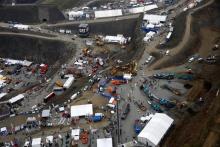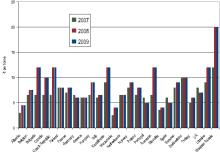News of the latest impact of the current global financial instability seems to be a daily occurrence these days, with the effects hitting both work and home. There is much talk in the quarrying industry about the knock-on effect and whether it will be a short or long term issue or if it really is an issue at all.
The question of the actual impact on individual companies seems likely to depend on the geographical spread of the business. While buoyancy in the Eastern European and Russian markets is helping to offset the overall performance of the pan-European industry, the credit crunch is starting to bite in some sectors.
The housing markets in Spain, Ireland and the UK are in decline and this has led to
Ennstone has also revised its figures for the second half of the year downwards to reflect the downturn in the UK and US market, but has said that its business in Poland is still growing and expanding in line with its forecasts.
this year due to its strong presence in the US market where the decline is real and also due to fluctuations in currencies around the world. Just a quick glance at the Sharewatch table in this issue shows that investors are getting nervous about the construction materials sector.
Most of Europe has enjoyed slow but steady continued growth over the last decade and the quarrying market has become more globalised since the last downturn, so it is hard to predict the effects of the latest slowdown.
One country that has had recent experience of declining demand but emerged from the
other side is Germany, which experienced more than a decade of construction recession following the post-reunification boom. Now the country is slowly returning to growth and the German companies that looked for opportunities outside the country's borders are now prospering thanks to their broader bases.
The return to growth in Germany and also the fast growing aggregates markets in Eastern Europe are good news for this year's
In this issue of ABE we have taken a look at the range of new machines and technologies that will be on offer at Steinexpo and also visited the quarry that hosts the event. MHI's
Neider-Ofleiden is not only home to continental Europe's largest quarry exhibition but it is also the region's largest basalt quarry and the diversification of the activities there typifies the entrepreneurial approach that helped some companies survive the German recession while others floundered.








